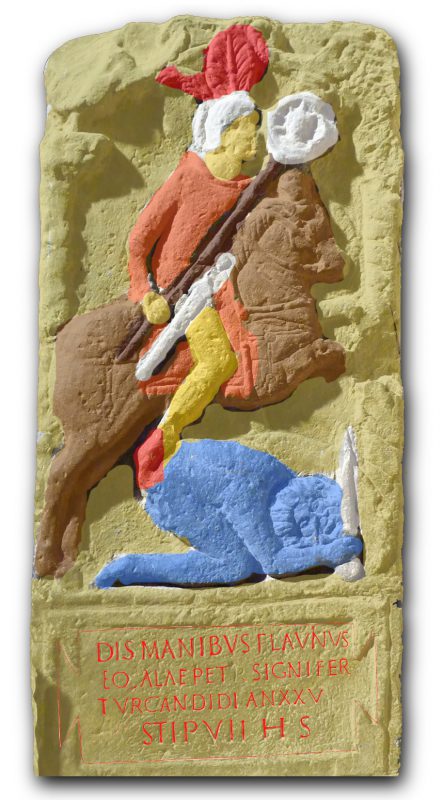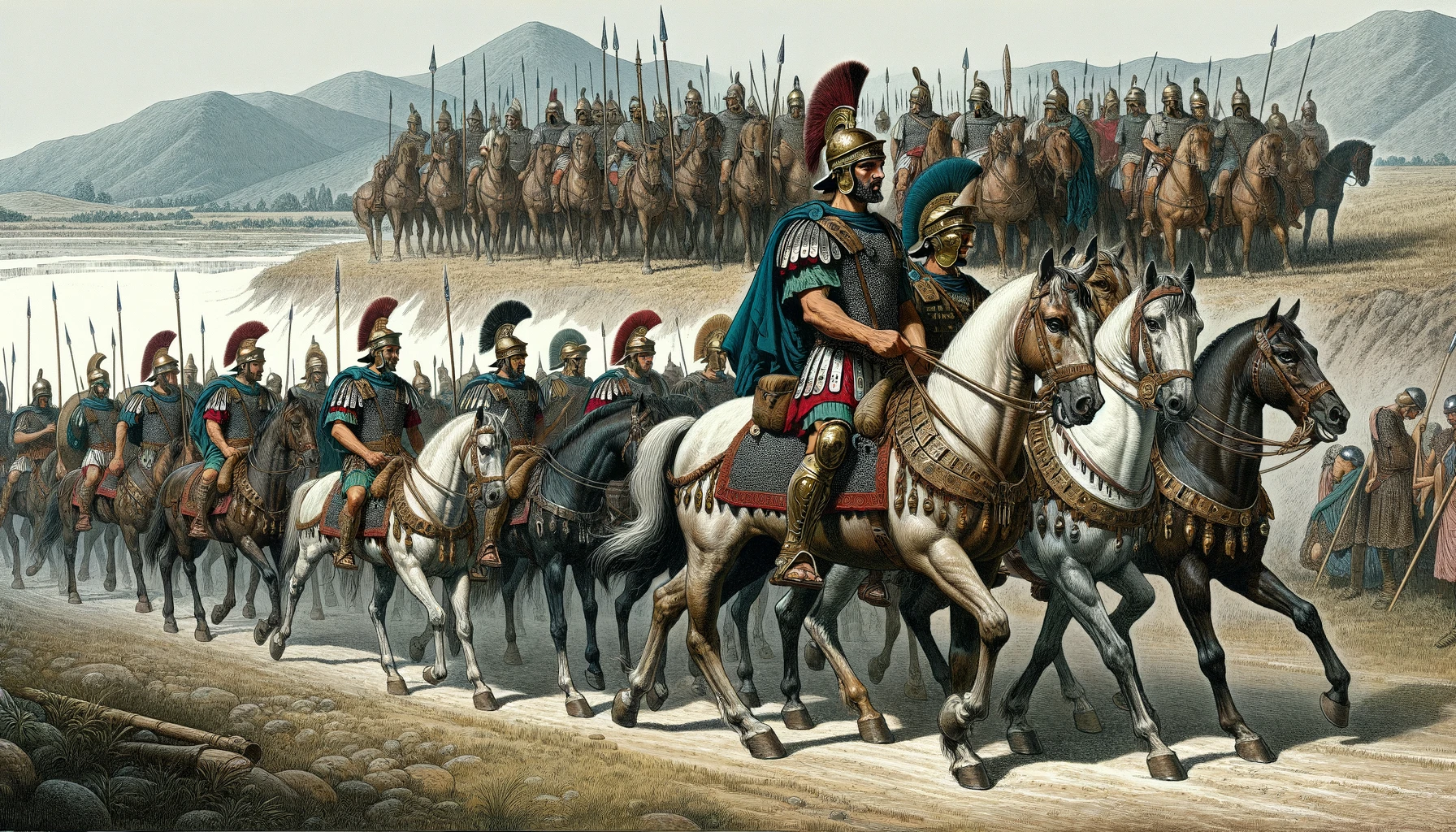The Ala was stationed in the provinces of Germania and Britannia (in that order). She is listed on military diplomas for the years AD 98-135. The unit was initially stationed in the province of Germania in the 1st century AD , where it is documented by an inscription that is dated to 55.
At an unspecified date (possibly under Quintus Petillius Cerialis around 71/74) the ala was moved to the province of Britannia , where it is first attested by a diploma dated 98. The Diploma lists the Ala as part of the troops that were stationed in the province. Other diplomas dated 122 through 135 place the unit in the same province.
The unit was last mentioned in the Notitia dignitatum with the name Ala Petriana for the Petrianis location. She was part of the troops under the command of the Dux Britanniarum , under the direction of a prefect.
The Petrian Wing took its name from Titus Pomponius Petra, who was probably the original commander of the unit shortly after it was raised from the tribes of central Gaul at the turn of the first century AD. The unit is recorded at Moguntiacum (Mainz, Germany) in 56 AD, and is known to have fought for Vitellius in 69 (vide infra).
Tacitus mentions the entity in his Historiae (Book I, Chapter 70) as Ala Petriana .
“… since a single squadron of horse could not protect the broadest part of Italy, he¹ sent in advance infantry, made up of Gauls, Lusitanians, and Britons, and some German detachments with the squadron of Petra’s Horse, while he himself delayed a little …” (Tacitus Histories I.lxx)
“Meantime Claudius Sagitta, prefect of Petra’s Horse, by a fortunate voyage, arrived before the centurion Papirius who had been dispatched by Mucianus …” (Tacitus Histories IV.xlix)
- Caecina, a general of Vitellius.
The unit first arrived in Britain in the train of governor Quintus Petillius Cerialis in AD71, and at this time was an ala quingenaria, a nominal five-hundred troopers strong, possibly being initially stationed at Corbridge (Corstopitum) in Northumberland.
RIB 1172 - Funerary inscription for Flavinus
To the spirits of the departed: Flavinus, trooper of the cavalry regiment Petriana, standard-bearer, from the troop of Candidus, aged 25, of 7 years’ service, lies buried here.
EQ ALAE PETR SIGNIFER
TVR CANDIDI AN XXV
STIP VII H S
This inscription seems to belong to the first century, as the squadron is not here given the honorary title C. R. which occurs on a diploma of A.D. 98, CIL xvi 43 (see Birley, Dumfriess. and Gall. NHAST 3rd Ser. 35 (1956-7), 11).

The inscription below tells us that the ala was moved to Carlisle (Luguvalium) sometime during the reign of Trajan (98-117), by which time it had become milliaria, one-thousand strong. They were moved to a new fort nearby at Stanwix (Uxelodunum) when Hadrian’s Wall was here replaced in stone (c. AD130), and were stationed there for the remainder of Roman rule in Britain.
RIB 957 - Fragmentary dedication by prefect of Ala Augusta Petriana
… from Luca, prefect of the Cavalry Regiment Augusta Petriana, decorated with a torque, one thousand strong, Roman citizens, gave it as a gift or gave and dedicated it.
AEF ALAE AVGVSTAE
PETRIANAE TORQ ↀ C R
D D
No commentary.
the Notitia dignitatum places the unit at Petriana / Uxelodunum (Stanwix at Carlisle)
Name parts of Ala Augusta Gallorum Petriana
Ala Augusta Gallorum Petriana bis torquata milliaria civium Romanorum
- Ala : The Ala was a cavalry unit of the auxiliary troops in the Roman army .
- Augusta : the Augustan. The honorific refers to Augustus .
- Gallorum : the Gaul . The soldiers of the Ala were recruited from the various tribes of the Gauls when the unit was formed.
- Petriana: of Petra. : The cavalry units of the Gauls were often named after one of their first commanders. The Petrian Wing took its name from Titus Pomponius Petra
- ( bis ) torquata : awarded (twice) with torcs . The addition occurs in three inscriptions
- milliaria : 1000 men. The unit was probably originally an Ala quingenaria with a target strength of 480 men. By 122 AD at the latest, however, it had been expanded to become an Ala milliaria . The addition occurs in military diplomas from 122 to 135 and in two inscriptions .
- civium Romanorum : of the Roman citizens. The soldiers of the unit had been granted Roman citizenship at a certain point in time. However, this did not apply to soldiers who were accepted into the unit after this point in time. They received Roman citizenship only with their honorable farewell ( honesta missio ) after 25 years of service. The addition occurs in military diplomas from 109 to 162/203 AD.
Evidence for the presence of Ala Augusta Gallorum Petriana in Britain
- L’Année Épigraphique 1997.1779a diploma dated c. AD126.
- Corstopitum (Corbridge, Northumberland; RIB 1172; tombstone)
- Luguvalium (Carlisle, Cumbria; RIB 957; Trajanic)
- Vxelodunum (Stanwix, Cumbria; RIB 2411.84; lead seal)
- Petrianum (Stanwix, Cumbria; Notitia Dignitatum xl.45; c. 4th/5th C. AD)
